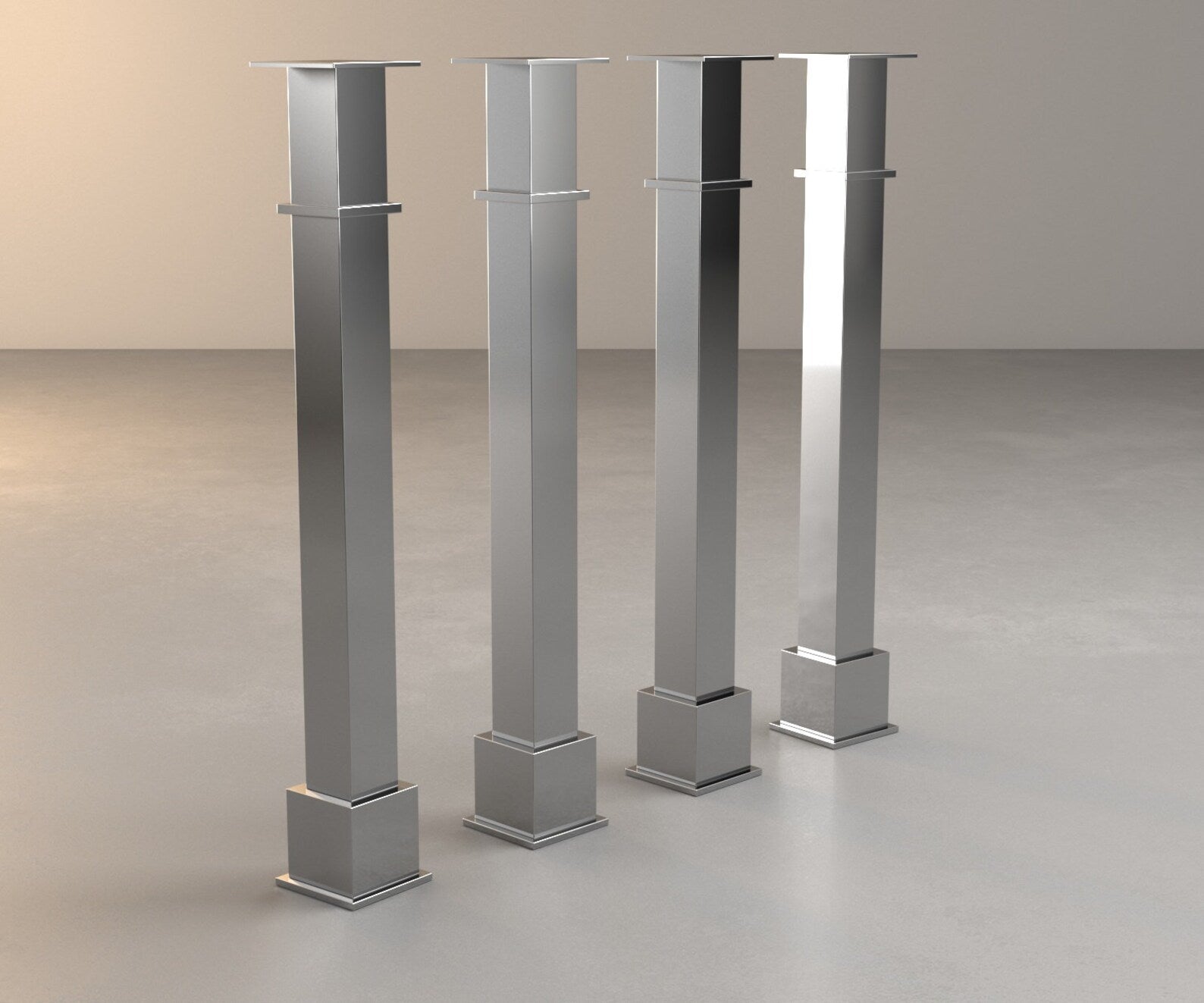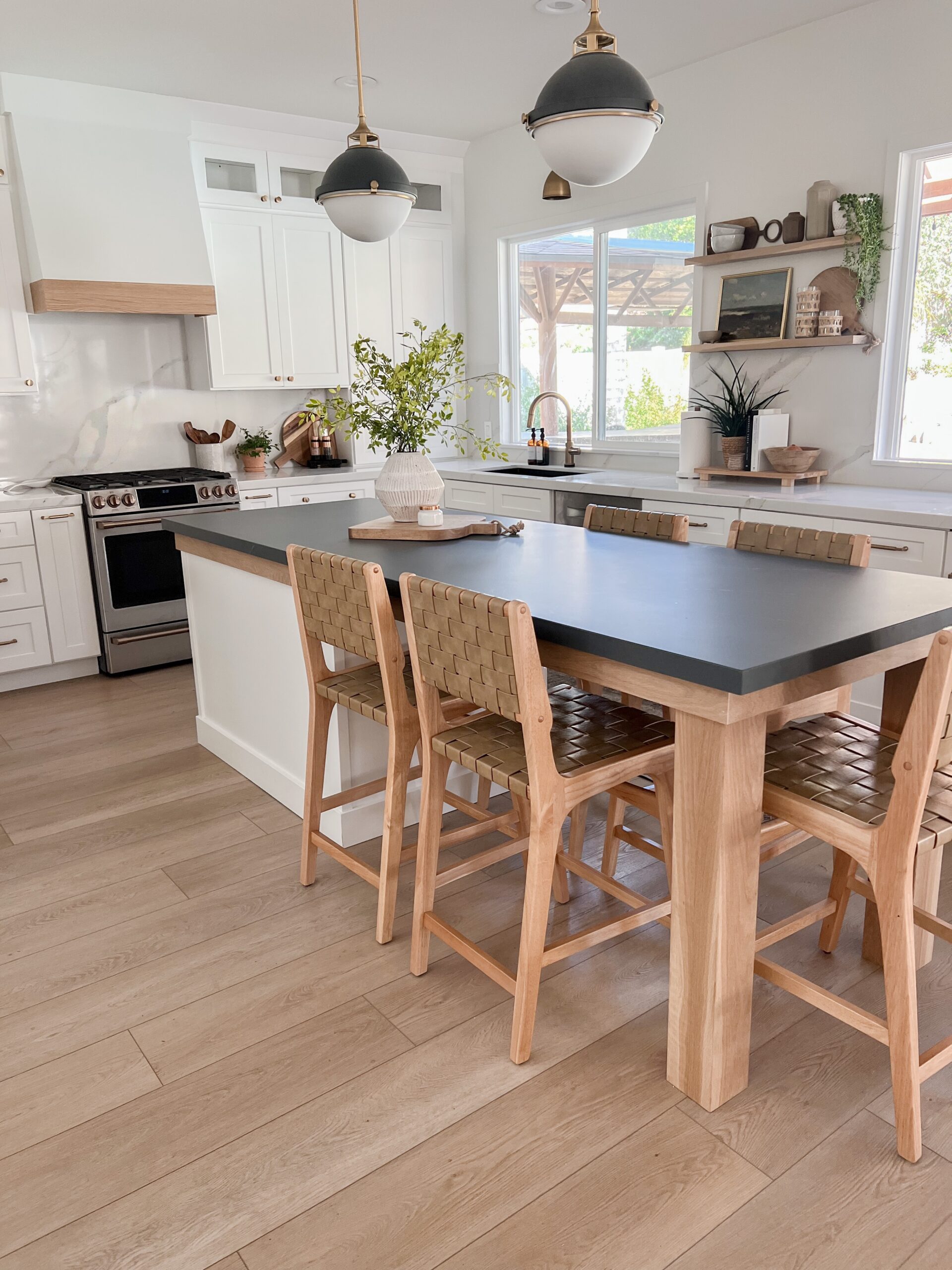Long Lasting and Fashionable Choices for High-Quality Legs For Kitchen Island
Long Lasting and Fashionable Choices for High-Quality Legs For Kitchen Island
Blog Article
Secret Factors To Consider for Discovering the very best Legs For Kitchen Area Island for Your Design
When picking the suitable legs for your kitchen island, several key considerations enter into play that can dramatically affect both functionality and looks. The choice of material, design, and height must line up with your overall cooking area design to make certain an unified look. In addition, stability and upkeep demands are vital for lasting usage and convenience of treatment. Comprehending these factors can boost your cooking area's functionality and visual appeal, however the nuances of each factor to consider can often be ignored. What implications might these choices carry your kitchen's total ambience?
Determine Your Style Choice
When choosing the suitable legs for your kitchen area island,Establishing your style choice is crucial. The legs of your kitchen area island not just offer a useful purpose however additionally add considerably to the general visual of the space. Therefore, recognizing your design style-- be it contemporary, rustic, conventional, or industrial-- is crucial.
For a modern-day cooking area, consider sleek, minimalistic legs that enhance clean lines and open spaces. On the other hand, a rustic setup may take advantage of more durable, farmhouse-style legs constructed from recovered materials. Typical cooking areas commonly favor turned or ornate legs, which can include a touch of beauty and elegance. Meanwhile, a commercial aesthetic could call for metal legs that stress a raw, incomplete appearance.
In addition, take into consideration the elevation and proportion of the legs in regard to the island's surface. This ensures the visual equilibrium and functionality essential for day-to-day usage. Evaluating the existing components in your cooking area, such as kitchen cabinetry and appliances, can also direct your decision, guaranteeing cohesiveness in layout. Inevitably, your design preference will affect not just the selection of legs however likewise the general harmony of your kitchen area's layout.
Choose the Right Product
Selecting the right product for your cooking area island legs is crucial in guaranteeing both durability and visual appeal. Numerous products provide distinct benefits, and the option typically reflects your design choices and practical demands.
Timber is a popular option, giving heat and flexibility. It can be discolored or repainted to match your kitchen style, making it adaptable to various styles, from rustic to contemporary. Wood may require normal maintenance to preserve its appearance and honesty.

If you seek an one-of-a-kind touch, consider acrylic or glass materials. They can produce an impression of space and lightness in your cooking area, making them an exceptional option for smaller sized locations - Legs For Kitchen Island. However, these options might need mindful handling and maintenance to stay clear of scratches.
Ultimately, the material you pick ought to line up with your kitchen's general style, making sure that the legs serve both functional and decorative objectives.
Consider Height and Percentages
When developing a kitchen area island, elevation and percentages play an important function in making certain performance and convenience. The standard elevation for a kitchen area island commonly varies from 36 to 42 inches, straightening with conventional counter heights or bar heights, respectively. This dimension is important for integrating with bordering countertops and stools, allowing convenience of usage throughout dish prep work and social communications.
Additionally, the island's proportions need to complement the overall cooking area layout. A well-proportioned island ought to not bewilder the room; rather, it should create a balanced visual. Think about the ratio in between the island's width and size, ensuring it provides ample area without crowding the kitchen area. A general guideline is to maintain a width of 24 to 48 inches, helping with movement and ease of access.
In addition, the elevation of the legs or base can affect the aesthetic allure and capability. Taller legs might lend a more contemporary, ventilated feeling, while much shorter ones look at this site can stimulate a traditional, based look. Eventually, thoroughly thinking about height and proportions will certainly lead to a kitchen island that is both aesthetically enticing and functionally efficient, enhancing the overall layout of the area.
Assess Stability and Longevity
A kitchen island's legs must not only match its elevation and proportions but additionally offer appropriate stability and resilience to support daily activities. The legs are essential to the general capability of the island, as they birth the weight of the kitchen counter and any kind of additional loads, such as appliances or food prep work tasks.
When assessing security, it is vital to take into consideration the leg design and material. Tough metal or strong wood legs commonly supply remarkable strength contrasted to lighter materials like engineered timber or plastic. Furthermore, a wider base can improve stability, lowering the risk of tipping or wobbling during usage.
Toughness is similarly crucial; the legs must stand up to wear and tear from daily usage. Consider surfaces that safeguard versus scratches, damages, and wetness, specifically in a kitchen area setting. Assess the quality of building and construction, such as joints and fastenings, which can substantially impact the legs' long-lasting home performance.
Inevitably, spending in well-crafted legs that prioritize security and toughness will certainly guarantee your kitchen area island remains a reputable work area for years to find, improving your culinary experiences while keeping aesthetic allure.
Consider Upkeep and Treatment
Maintenance and care are crucial considerations for guaranteeing the durability and performance of kitchen area island legs. When selecting legs, it is vital to examine the materials made use of, as various alternatives need varying degrees of maintenance. Wood legs might require periodic refinishing or securing to avoid wetness damages and scrapes, while metal legs may require normal like this brightening to keep their sparkle and stop rust.
Moreover, the coating put on the legs can influence upkeep demands. A high-gloss finishing may be much easier to clean however might reveal scratches and finger prints quicker than a matte coating. It is recommended to select materials and finishes that match your lifestyle; for example, if you regularly organize gatherings, decide for resilient products that can hold up against deterioration.
Additionally, think about the cleaning procedure associated with maintaining these legs. Smooth surfaces frequently call for marginal effort, while complex styles might build up dirt and grime, requiring even more labor-intensive cleaning techniques. Legs For Kitchen Island. Inevitably, factoring in the upkeep and care required for your picked kitchen area island legs will not only boost their aesthetic appeal but likewise guarantee their practical honesty gradually
Verdict
In conclusion, picking the optimum legs for a kitchen island necessitates mindful factor to consider of numerous elements, including design style, material option, maintenance, stability, and elevation. Each element plays a critical function in guaranteeing that the legs not only boost the aesthetic appeal of the kitchen yet additionally give the needed assistance and toughness for daily usage. A well-informed choice will eventually add to a practical and visually pleasing kitchen area atmosphere.
The legs of your cooking area island not only serve a functional purpose yet likewise add significantly to the overall visual of the room.Upkeep and treatment are essential considerations for guaranteeing the long life and efficiency of kitchen island legs. Wooden legs might need periodic refinishing or securing to prevent moisture damage and scrapes, while metal legs may need routine polishing to maintain their sparkle and prevent corrosion.
Eventually, factoring in the maintenance and treatment required for your picked kitchen island legs will certainly not only boost their aesthetic appeal however also guarantee their functional honesty over time.

Report this page